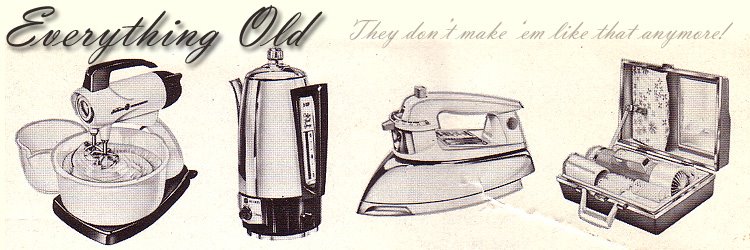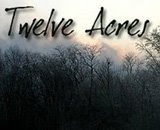skip to main |
skip to sidebar
 I have some exciting news about my little English china dish! I submitted a photo of the mark to Figurines-Sculpture.com and asked if they could identify the maker. I received this very exciting reply today:
I have some exciting news about my little English china dish! I submitted a photo of the mark to Figurines-Sculpture.com and asked if they could identify the maker. I received this very exciting reply today:
"Hi Amy,
"Thanks for your interesting question about the mystery pottery mark shown in the above photo. A clear photo like that always makes identification easier.
"The mark is one I am pleased to be able to identify as that of Samuel Radford Ltd, a Staffordshire maker of good quality producing fine china between 1879 and 1957. They were originally a Longton maker, then in 1885, moved to Fenton.
"You are right in saying your mark was an early mark dating from c1880 to c1913, so you have a very accurate date for your wares. After about 1913, the firm developed a new pottery mark called "Radfordian", and developed at least 10 or so different pottery marks, some using the S.R. initials in various fonts, and some using the Radfordian back mark.
"If you go to my China Replacement page and follow the tips on how to search efficiently online, you will find some wares from the same maker. Be aware of sellers who are not properly flagging up the quality and rarity of Samuel Radford Ltd wares. Having gone out of business in 1957 makes Radford China relatively rare. Be careful not to mistake Samuel Radford with other makers with a similar name. They are:-
"RADFORD (signature on printed ware)- Relates to engraver Thomas Radford.
E. RADFORD - Relates to H.J. Wood Ltd
G. RADFORD - Relates to Radford Handcraft Pottery
"I am not a china expert by any means, just an artisan within the industry, however, I always pass on any information I have for free and publish it for all to benefit from. You can use my in-house search engine located on the home page (and on many other main pages) to check for answers to any other queries you may have.My own knowledge more centered on famous English china makers, but all queries are welcome.I give general tips on pottery marks here (my own page)."
Now I have to research this dish some more and find out its value! What if I'm holding onto a china dish that worth $1,000? Then what?
I think that little dish was a gift to my grandma. It stands out like a sore thumb amongst her things. I seriously doubt she would have chosen it herself. But it's certainly becoming a very interesting piece! Stay tuned...

 This is a fun bowl. I try to use it as much as possible. Right now it's holding apples. I can't find a maker's mark on it anywhere so I don't know how old it is but its colors and style make me think 1950s. It's about 10" in diameter and not very deep so it's not good at holding a lot of stuff. But I knew I had to have it when I saw it last November at Lene's Web. If you have one like it or can tell me anything about it I'd like to hear about it.
This is a fun bowl. I try to use it as much as possible. Right now it's holding apples. I can't find a maker's mark on it anywhere so I don't know how old it is but its colors and style make me think 1950s. It's about 10" in diameter and not very deep so it's not good at holding a lot of stuff. But I knew I had to have it when I saw it last November at Lene's Web. If you have one like it or can tell me anything about it I'd like to hear about it.
 I picked up a few more vintage items at Lene's Web today. This Westclox "Dialite" makes me think of the spare bedroom at my grandma's I used to sleep in. There was a clock similar to this one near the bed. The face glowed orange at night just bright enough to see what time it was. This one glows too and it takes me back! It's pale blue and was sitting next to a white one. When I set the time I tested the buzzing alarm and the sound of it really took me back.
I picked up a few more vintage items at Lene's Web today. This Westclox "Dialite" makes me think of the spare bedroom at my grandma's I used to sleep in. There was a clock similar to this one near the bed. The face glowed orange at night just bright enough to see what time it was. This one glows too and it takes me back! It's pale blue and was sitting next to a white one. When I set the time I tested the buzzing alarm and the sound of it really took me back.

These gratin dishes really caught my eye, especially the deep orange pair. The 50's color and shape is fantastic--right up my alley! I can't find a maker's mark on the orange ones.
The Hall gratin dish is less stylish but I took it anyway because it's a Hall and it's one I don't have. It's upside down to show the maker's mark. Now I just have to find uses for these new dishes. I thought they'd be handy to put chopped toppings in for tacos. It would have been nice if I could have found a matched set of 4 so that I could actually use them to serve individual gratins but Marlene said she only had these. Their colors would be appropriate around Halloween and Thanksgiving. They could serve as candy dishes then.
 It was 60 degrees out just two days ago. Now it's 34 and I've got a quilt draped over my lap that my mom made for me. Mom and grandma were both quilters. I didn't inherit the sewing gene; I'm the cook. I think it's safe to say that just about everyone has a quilt or two that are family heirlooms.
It was 60 degrees out just two days ago. Now it's 34 and I've got a quilt draped over my lap that my mom made for me. Mom and grandma were both quilters. I didn't inherit the sewing gene; I'm the cook. I think it's safe to say that just about everyone has a quilt or two that are family heirlooms.
I have quilts all over the house that were made by either my mom or my grandma. It's wonderful to have them. They are nice to look at and useful too. Sometimes I'd rather wrap up in a quilt than put my fleece bathrobe on.
all over the house that were made by either my mom or my grandma. It's wonderful to have them. They are nice to look at and useful too. Sometimes I'd rather wrap up in a quilt than put my fleece bathrobe on.
 In this 1957 edition of "Home Journal", modern household items are featured (click to biggify). The "free wheeling" tea cart was featured in the 1957 Furniture Show in Chicago. It is priced at a very affordable $70.
In this 1957 edition of "Home Journal", modern household items are featured (click to biggify). The "free wheeling" tea cart was featured in the 1957 Furniture Show in Chicago. It is priced at a very affordable $70.
Next is the "Smoke-N-Odor Stop" by Philco which removes smoke and odors when placed over a range burner. Basically it was a catalytic converter for the stove. I wonder if it worked? It cost $30.
The Nutone Food Center is featured in the last photo. The base sat in the electric motor which was located beneath the counter top. I think this might have been the predecessor to the KitchenAid mixer with all its attachments. The meat grinder attachment is in use in the photo. You could also get the mixer, blender and juicer as separate attachments. The base unit was $79.50, the juicer was $3.95 and the grinder was $19.95.
If you had any of these items in your home I'd be interested in hearing about them.
 I have some exciting news about my little English china dish! I submitted a photo of the mark to Figurines-Sculpture.com and asked if they could identify the maker. I received this very exciting reply today:
I have some exciting news about my little English china dish! I submitted a photo of the mark to Figurines-Sculpture.com and asked if they could identify the maker. I received this very exciting reply today:






































